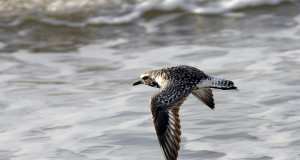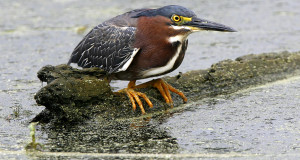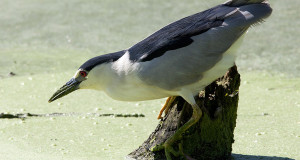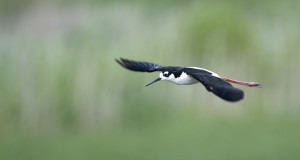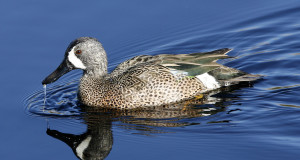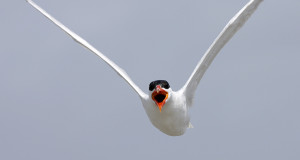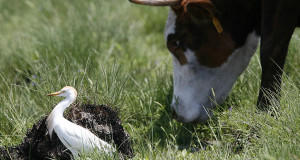The Black-bellied Plovers' face, throat and belly are painted black during breeding season - from April to September - and a dull gray the rest of the year.
Read More »Black-bellied Whistling-Duck
Black-bellied Whistling-Ducks have the long neck and legs of a goose. But their red bill, gray face, cinnamon back and black underbelly make them one of the Texas coast's most colorful ducks. The other half of their name comes from the sharp whistling sound they make when chatting or flying up.
Read More »Green Heron
Green Herons are solitary birds that crouch on logs and branches in the shadows along wooded streams and ponds, waiting for a fish.
Read More »Black-crowned Night-Heron
Black-crowned Night-Herons are stocky birds with layers of blue and gray plumage, a black cap and a long, thin white plume that streams off the back of their necks.
Read More »Black-necked Stilt
Black-necked Stilts stride through shallow ponds and marshes on their spindly red legs, feeding on a variety of insects and small fish. Among birds, only Flamingos have longer legs in proportion to their bodies.
Read More »Blue-winged Teal
Blue-winged Teals are small dabling ducks common on the edges of ponds and marshes with deep vegetation. They typically forage in pairs or small groups, often in the company of other dabbling ducks.
Read More »Boat-tailed Grackle (Gulf Coast)
Boat-tailed Grackles are one of three related species on the Texas Gulf Coast, as if one weren't enough. They're a large, dark bird with a loud, harsh call.
Read More »Brown Pelican
Brown Pelicans are large and ungainly birds with a distinctive bill pouch. Look for them gliding in packs along the shore or floating on the water just beyond the breaking waves.
Read More »Caspian Tern
Caspian Terns are bulkier than their cousins and more akin to a gull. They soar high above beaches, lakes and rivers scouting for fish and often dive completely underwater in their pursuit.
Read More »Cattle Egret
Cattle Egrets get their name from their habit of wandering among herds of livestock looking for insects. They're a common sight in fields and along roadsides as well, particularly where freshly mowed grass has stirred up a prospective meal.
Read More »